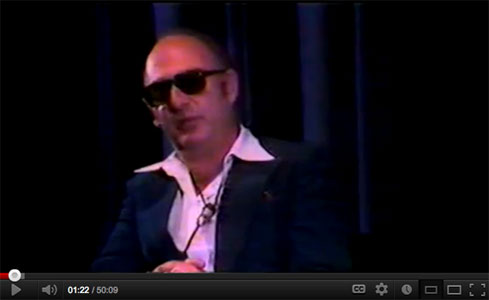July 2012
(scroll down)
RWA Bristol: "The work has not been officially authenticated and the RWA do not support any claims of authentication by the owner."
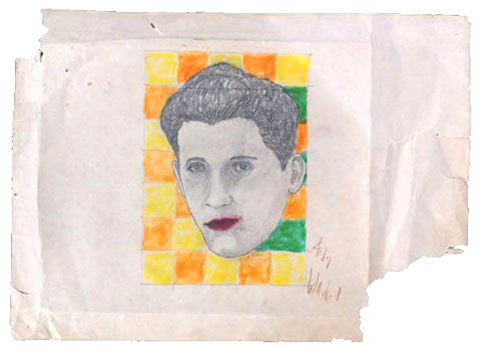
The Royal West of England Academy in Bristol, England have now acknowledged that the work they previously claimed was the "earliest known work by Andy Warhol" has not been officially authenticated and they "do not support any claims of authentication by the owner." They have posted their statement here. The work is claimed by its owner, Andy Fields, to be a childhood drawing of Rudy Vallée by Andy Warhol.
To read full article go here.
Links to the previous articles/statements on the alleged work by Warhol can be found below:
Links
1. The RWA fails to name an expert who believes the sketch is by Warhol
2. The RWA president asks "Is the Andy Warhol authentic or a hoax?"
3. Statement from Andy Warhol's brother, Paul Warhola
4. Gertrude Stein expert confirms that alleged Stein sketch is not by Gertrude Stein
5. Statement from Warhol expert Patrick Smith denying that the Warhol sketch is by Warhol
6. Questions for the RWA Bristol
7. Rudy Vallee sketch to be exhibited at the Royal West of England as an authentic Warhol
8. $3 jumble sale sketch is £1.3 million Warhol - or is it?
External Links
1. ITV Bristol (Scroll down for video of broadcast)
3. Art Info
4. BBC Magazine
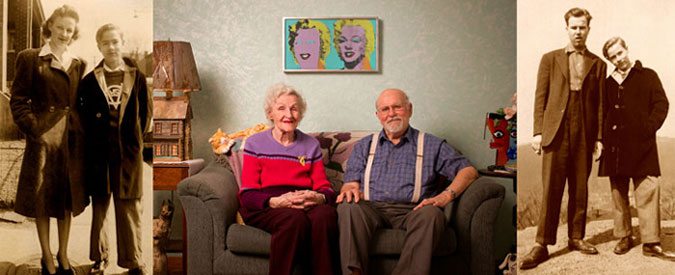
Paul, Anne and Andy Warhola
(Family portrait tryptych by James Warhola)
Andy Warhol's brother, Paul Warhola, celebrated his 90th birthday on June 26th, 2012. There was a recent gathering of the Warhola/Zavacky clan in Pittsburgh, Pennsylvania to celebrate Paul’s 90th birthday. Paul is Andy’s oldest brother by six years, born in 1922.
The party was a lively gathering of all of seven of Paul and Anne’s children and several of his first cousins who are all in their late 80’s and 90’s. It took place in their neighborhood at the West Homestead Fire Hall and featured such fine traditional Rusyn foods such as halupkis and poppy seed rolls.
Later this year Paul and Anne will celebrate their 70th year wedding anniversary.
Warholstars wishes Paul a very happy birthday and a happy anniversary to Paul and Anne!
Andy Warhol Foundation objects to the use of Warhol forgeries as a marketing ploy
The Andy Warhol Foundation has objected to the showing of Warhol forgeries by the Art Series Hotel Group. An art forger was commissioned by the group to produce nine fake Warhols that would be hung with a real Warhol so that guests could guess which was which. Michael Herman, Director of Licensing at the Foundation commented that “The Andy Warhol Foundation is appalled to learn that a hotel would think it wise to commission forgeries in an attempt to market its services.” A world renown expert in art authentication, Robyn Slogget, was due to speak at the exhibition but has now pulled out. Details here.
Ivan Karp R.I.P.
Barbaralee Diamonstein-Spielvogel interviews Ivan Karp on You Tube here
One of the earliest proponents of Andy Warhol's Pop paintings, Ivan Karp, died Thursday 28 June 2012 at home in Charlottesville, New York. Prior to Ferus Gallery exhibition of Warhol's Soup Cans, Karp brought collectors to Warhol's home to see his work and also advised Warhol to drop the drips on his original pop paintings. Before working for Leo Castelli Karp worked for Martha Jackson. He went on to start his own gallery, O.K. Harris, in 1969.
Karp is survived by his wife, the sculptor Marilynn Gelfman; his sons Ethan and Jesse; his daughter, Amie Karp; his sister, Rhoda Ben-Isaac; and two granddaughters.
Ivan Karp (from Andy Warhol's Art & Films by Patrick S. Smith):
He [Andy Warhol] showed me a body of work, and they were largely of cartoon subject matter. And they were, as I rapidly discerned with my acute perception, of two distinct types. One was a group of cartoon characters which were expressionistically (that is, were sketchily) done. And the outlines of the figures were ideologically connected to the prevailing tradition of Abstract Expressionism - a lot of dripping and of loose painting and a lot of what you would call 'action gesture.' Although, there was another group of paintings that were very cartoon-live, very static and very stylized... I immediately decided that to do it blandly and in a stylized way was more legitimate than to try the tradition that had preceded it. So I said to him, 'Why do you make these splashes on the picture when you can do them the other way in a very stylized and in a very flat way, without all those sketchy markings?' He said, 'Well, I prefer to do them that way, but it seemed that there would be no audience interest in any work that was not expressive in this style. In other words, you can't do a painting without a drip.' I said 'Maybe it is possible to do it since this Roy Lichtenstein is doing it without drips. Maybe, you can make a painting in modern times without a drip,' I said. He said, 'I would prefer to do that.' And he said, 'It would give me a certain amount of encouragement to hear somebody say that.' So I said 'How many people have been here?' And he said, 'Nobody. I mean, like, you're the first one, basically, to see these pictures except for my few friends.'
Robert Heide reviews Harry and Jackie
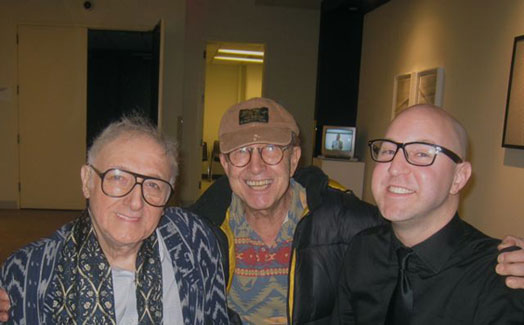
Robert Heide (centre) with Warhol's commercial art assistant Vito Giallo (left)and Thomas Kiedrowski (author of Andy Warhol's New York at 92YTribeca in March 2012 (Photo: Avagraffiti)
Robert Heide of Caffe Cino fame and the author of The Bed has contributed a review of La Mama's productions of H.M. Koutokas' play When Clowns Play Hamlet ("A Bitter Camp") and Jukebox Jackie, a musical revue based on Jackie Curtis' work.
Robert Heide (from the review):
"I was talking on the phone recently with Jeff Weiss, now living in Allentown, Pennsylvania, who told me that on opening night of Clowns in 1967 Harry in a fit of rage threw a cup of hot cocoa in Ellen Stewart’s face and Tom O’Horgan chased him out onto the street with a hammer in hand. Many stories persist about the ups and downs of Harry; but all of that is for another day. I regarded Harry, who lived across from me on Christopher Street, as always a garrulous, mischievous, troublesome child who was driven by demons; but who could also write genuinely pertinent plays like Two Camps by Koutoukas, presented off-Broadway at the Actors Playhouse, which featured the most brilliant lighting I had ever seen in the theater, by Johnny Dodd. The opening night of Two Camps found Harry screaming at the actors on stage – “PICK UP THE PROP!” in a loud vexatious voice."
The review can be found here.
Carol Bergé's Light Years
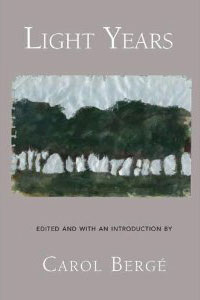
Carol Bergé's anthology of "multimedia in the East Village" during the 1960s can now be purchased via a link on Bergé's site here. Contributions to the anthology include "Sound of the Serpent" by Andy Warhol's scriptwriter, Ronald Tavel; a piece titled "Mickey Ruskin" by Neil Holstein and work by Diane Wakoski, Carolee Schneemann, Judith Malina, Philip Corner and others.
Carol Bergé:
The Tenth Street Coffeeshop opened and began readings. One night I went in, with poems I’d written in Mexico and Europe. Ed Kaplan was in process of selling his share to Mickey Ruskin, a darkly handsome New Jersey lawyer who was drawn to the arts. His partner was Bill Mackey. Unlike the West Village coffeeshops, this was a tiny space, divided by a trellis-like barrier into two sections; at the far end was a coffee- bar. A barrier meant they could fit a few more tables into the space. It was warm and well-lit. People were reading their poems aloud; the M.C. was another lawyer manqué, Howard Ant, who also wrote poems and was a gambler, a bespectacled gent who lived in the West Village in a cellar apartment and whose poems sounded surrealistic to me. He and poet Ree Dragonette started the readings. I kept going back, not reading, just listening. One night there was a reading unlike anything I ever experienced: Jackson Mac Low was apparently mumbling words that had no sense or order and called them poetry. I and others were very upset; Howard asked Jackson to leave. He did, with his small coterie of friends. I took a strange feeling away from that night’s events; it haunted me as I fell asleep in the tiny room upstairs from my Gallery. The classic ground under my feet shook - something was being presented that felt threatening because it didn’t meet my preconceived standards of “poetry.” I decided to force myself to be open to what Jackson was doing."
Ugh! - The website

During a recent trawl of the internet, I came across a fascinating blog that concentrates on graphic illustrations throught the decades with reproductions of interesting posters, advertisements etc... a sort of 'who's who' of twentieth century graphic illustration. Warhol was, of course, a commercial illustrator before he went Pop - he lived in New York for about fourteen years before he started the Factory and in 1958 was listed in the book 1001 Names and Where to Drop Them under the category of "Big Business" because of his success as a graphic illustrator.
Ugh! can be found here.
Early drawings of Andy Warhol to be published in September 2012
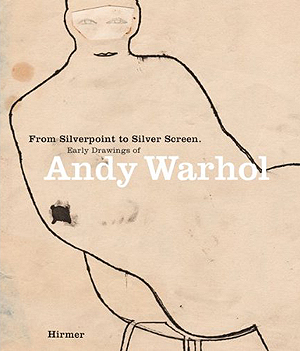
From Silverpoint to Silver Screen: Early Drawings of Andy Warhol will be published by Hirmer in September 2012. This is, presumably, the exhibition catalogue from from the Daniel Blau exhibition at Art Basel 2012 of Warhol's drawings from the 1950s. A selection of the images can be found on the Daniel Blau website here.
